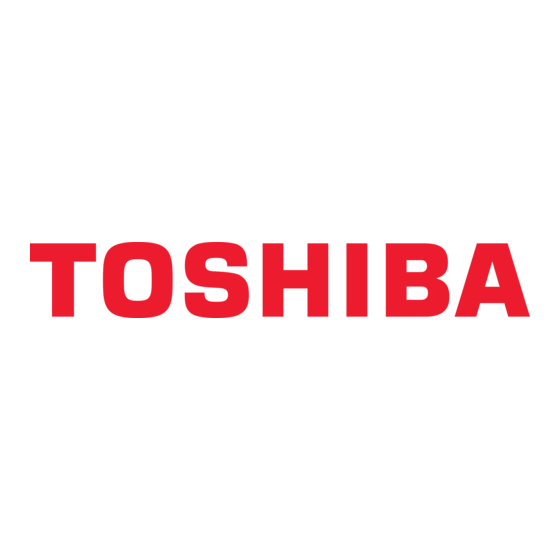
Table of Contents
Advertisement
LX800 Series
User's Guide
If you need assistance:
❖
Technical support is available online at Toshiba's Web site at
support.toshiba.com
many commonly asked technical questions plus many
downloadable software drivers, BIOS updates, and other
downloads.
For more information, see
page 109
At this Web site, you will find answers for
in this guide.
"If Something Goes Wrong" on
GMAD00309012
06/12
Advertisement
Table of Contents

Summarization of Contents
Introduction to Your Toshiba Computer
This User Guide
Explains how to navigate the manual for computer features, procedures, and troubleshooting.
Safety Guidelines and Precautions
Details safety icons, warnings, and precautions for safe computer operation and handling.
System Features and Documentation
Overview of computer features, specifications, and additional documentation provided with the system.
Chapter 1: Getting Started
Setting Up Your Computer Environment
Guidance on preparing a suitable work environment and connecting the computer to power.
Initial Computer Setup
Steps for initial computer setup, including connecting peripherals and powering on for the first time.
Software Installation and Registration
Instructions for setting up system software and registering your computer with Toshiba for updates.
Chapter 2: Learning the Basics
Essential Computing Tips
Key computing advice, including frequent work saving and data backup strategies.
Wireless Device Usage
How to use wireless mouse and keyboard, including battery replacement and basic functions.
Optical Disc Drive Operations
Guide to using the optical drive for playing CDs/DVDs/Blu-rays and recording media.
Chapter 3: Computing
Energy Efficiency Features
Information on Toshiba's energy-saving design and optimizing power consumption.
Power Management and Plans
Details on managing the computer's power settings, including RTC battery charging and power plans.
Chapter 4: Exploring Your Computer’s Features
Navigating the Desktop
Understanding the Windows desktop, icons, taskbar, and start button for basic operations.
Connectivity and Communications
How to connect to networks, including wireless LAN, and set up communication tools.
Multimedia and Peripherals
Using audio features, web cameras, memory card readers, and external devices.
Chapter 5: Utilities
TOSHIBA Assist Overview
Introduction to TOSHIBA Assist for system configuration and access to utilities like Connect, Secure, Protect & Fix, Optimize.
Security and Password Management
Setting up and managing computer passwords (supervisor, user, instant) for enhanced security.
System Management Utilities
Details on utilities for Face Recognition, PC Diagnostics, Mouse, Hardware Setup, Sleep, Buttons, Accessibility, eco Utility, Service Station, and Health Monitor.
Chapter 6: If Something Goes Wrong
Troubleshooting Common Problems
Solutions for issues like unresponsive programs, startup failures, and operating system errors.
Hardware and System Diagnostics
Guidance on troubleshooting hardware issues using Device Manager, memory, power, and drive checks.
Connectivity and Media Issues
Resolving problems with wireless networking, optical media playback, and sound systems.
Best Computing Practices
Recommendations for saving work, backing up data, installing software, and creating restore points.
Seeking Further Assistance
Information on contacting Toshiba support and finding additional help resources.
Appendix A: Hot Keys/TOSHIBA Cards
Using Hot Keys and Function Cards
How to use hot keys and TOSHIBA Cards to control system functions like display brightness, volume, and wireless.
Appendix B: Power Cord/Cable Connectors
Global Power Connector Types
Visual guide to typical AC power cord and cable connectors used worldwide.
Glossary of Technical Terms
Technical Acronyms and Terms
Definitions of acronyms and technical terms used throughout the user guide for clarity.












Need help?
Do you have a question about the LX835-D3203 and is the answer not in the manual?
Questions and answers